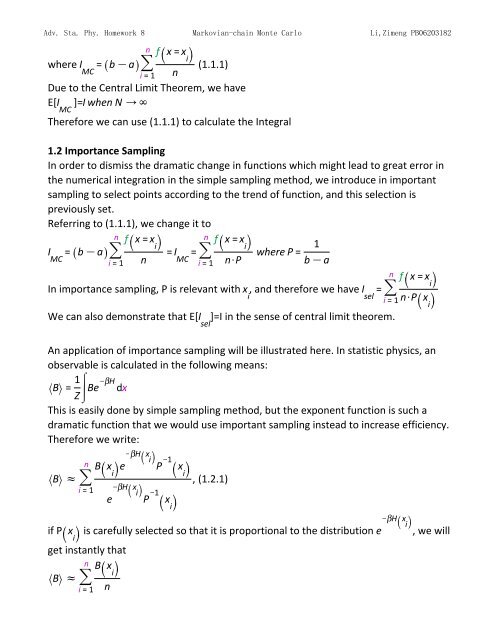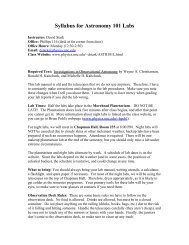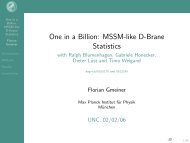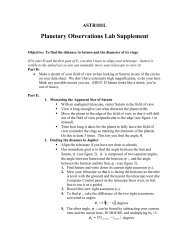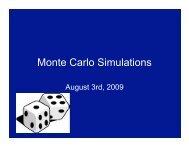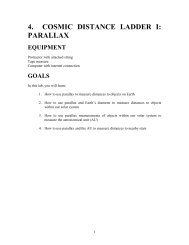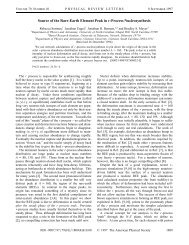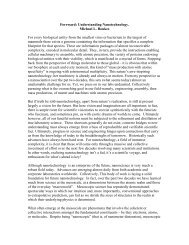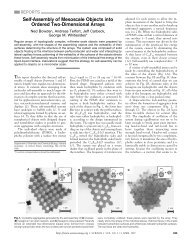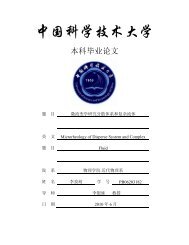Topics in Statistic Mechanics
Topics in Statistic Mechanics
Topics in Statistic Mechanics
You also want an ePaper? Increase the reach of your titles
YUMPU automatically turns print PDFs into web optimized ePapers that Google loves.
Adv. Sta. Phy. Homework 8 Markovian-cha<strong>in</strong> Monte Carlo Li,Zimeng PB06203182<br />
where (1.1.1)<br />
Due to the Central Limit Theorem, we have<br />
E[ ]=<br />
Therefore we can use (1.1.1) to calculate the Integral<br />
1.2 Importance Sampl<strong>in</strong>g<br />
In order to dismiss the dramatic change <strong>in</strong> functions which might lead to great error <strong>in</strong><br />
the numerical <strong>in</strong>tegration <strong>in</strong> the simple sampl<strong>in</strong>g method, we <strong>in</strong>troduce <strong>in</strong> important<br />
sampl<strong>in</strong>g to select po<strong>in</strong>ts accord<strong>in</strong>g to the trend of function, and this selection is<br />
previously set.<br />
Referr<strong>in</strong>g to (1.1.1), we change it to<br />
In importance sampl<strong>in</strong>g, P is relevant with , and therefore we have<br />
We can also demonstrate that E[<br />
]=I <strong>in</strong> the sense of central limit theorem.<br />
An application of importance sampl<strong>in</strong>g will be illustrated here. In statistic physics, an<br />
observable is calculated <strong>in</strong> the follow<strong>in</strong>g means:<br />
This is easily done by simple sampl<strong>in</strong>g method, but the exponent function is such a<br />
dramatic function that we would use important sampl<strong>in</strong>g <strong>in</strong>stead to <strong>in</strong>crease efficiency.<br />
Therefore we write:<br />
(1.2.1)<br />
if P is carefully selected so that it is proportional to the distribution e , we will<br />
get <strong>in</strong>stantly that


